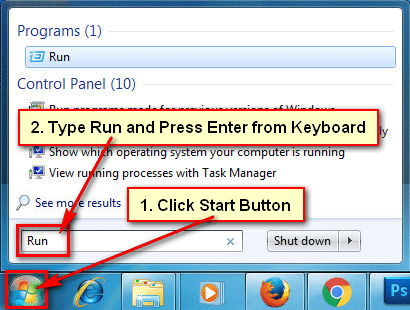Temp In Run Command
This method shows you how to delete temporary files using Command Prompt. Please perform the following steps: In the Command Prompt window please write the following commands: rd /s /q%temp% mkdir%temp% rd /s /q c:windowstemp mkdir c:windowstemp. Jul 3, 2004 - The% signs are used mostly for setting defaults in Windows. I don't know of many others that work with the run command. May 07, 2017 The run command window is one of the fastest and most efficient ways to directly access a multitude of Windows' functions, without sifting through the Control Panel or other menus. We have compiled for you a comprehensive list of 134 commands, confirmed to work in Windows 7, Windows 8, and Windows 10.
Solution: Most issues with Autodesk software that involve excessive or corrupt temp files can be resolved by deleting the contents of a user's local temp folder. To do this:. Exit all programs.
Del /q/f/s %temp%*
Press WINDOWS-R on the keyboard to bring up the Run window. Type%TMP% and then click OK. Delete the contents of the folder that opens up.Tip: There may be files in use by background processes, so not all files will delete. Rebooting may allow all of them to be deleted.Note: Instead of using the Run window, a couple other methods of getting to the temp folder is to type%tmp% in the Search field at the bottom of the Start menu or into the location bar of any folder window.Locations of temp folders in Windows:Windows Vista, 7, 8, 8.1, and 10:C:UsersAppDataLocalTempC:UsersAppDataLocalMicrosoftWindowsTemporary Internet FilesC:WindowsTempC:TempWindows XP:C:Documents and SettingsLocal SettingsTempC:Documents and SettingsLocal SettingsTemporary Internet FilesC:WindowsTempC:TempThese folders can be manually accessed.
The AppData folder is a hidden folder. The Temporary Internet Files folder is a hidden system folder.
Perfect Run Command
To see hidden folders, 'Show hidden files, folders, and drives' needs to be enabled in Folder Options. To see hidden system folders, disable 'Hide protected operating system files' in Folder Options.Additionally, the Disk Cleanup Utility can be used to clear out several categories of temporary files all at once. The utility is found in Start All Programs Accessories System Tools Disk Cleanup. At your own discretion, be selective in the options chosen. It is probably safe to pick everything except compressing files and cataloging (these take a long time to do and do not have anything to do with temp files).

Temp Command In Run
The showed how to configure Windows Disk Cleanup to reduce the time that temp files are kept. A simple approach that allows the deletion of temp files right away uses the Windows and the%TEMP%. Open the command line and enter:del /q/f/s%TEMP%.One precaution to observe: do not apply this command right after installing updates or new programs that require a reboot. Sometimes these processes use temp files to finish installation.Get your own favorite tip published! Know a neat tech tip or trick? Then why not have it published here and receive full credit?This tips section is maintained by Vic Laurie. Vic runs a Windows blog called and also operates afor more items like this.
Better still, get Tech Tips delivered or alternatively, have the direct to your in-box. Please rate this article.